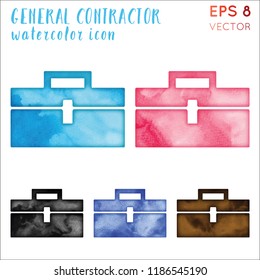Understanding The Basic Differences In Between Exterior And Interior Paint Is Crucial For Your Project. This Understanding Can Dramatically Impact Your Decision-Making Process-- Learn What You Need To Take Into Consideration Prior To Beginning
Understanding The Basic Differences In Between Exterior And Interior Paint Is Crucial For Your Project. This Understanding Can Dramatically Impact Your Decision-Making Process-- Learn What You Need To Take Into Consideration Prior To Beginning
Blog Article
Developed By-Pace Wilkerson
When you're choosing in between interior and exterior paint, it's necessary to comprehend their essential differences that influence both performance and looks. Interior paints are crafted for lower VOC levels and smoother coatings, making them suitable for indoor areas, while outside paints are designed to withstand extreme climate condition and UV exposure. Each type offers a distinctive function, yet recognizing when to utilize one over the various other can considerably influence your task's result. So, what elements should you think about when making your option?
Composition and Solution
When selecting between exterior and interior paint, recognizing their structure and solution is critical. Inside paints typically include a lower quantity of unstable natural substances (VOCs), making them more secure for indoor air top quality. You'll observe they frequently have a smoother surface, which boosts their capacity to stand up to stains and allows for simpler cleaning. They're developed to endure the rigors of indoor atmospheres, consisting of differing humidity levels and temperature level changes.
On the other hand, exterior paints are created to sustain harsher conditions. They generally include higher levels of pigments and additives to withstand fading from UV rays, in addition to to avoid mold and mold development. Their structure consists of much more binders and resins, which offer far better bond to surface areas subjected to the aspects. This ensures the paint can withstand rain, snow, and varying temperatures without peeling or breaking.
Performance and Resilience
Reviewing performance and resilience is necessary when picking between interior and exterior paint. Inside paint is developed for surfaces that experience less deterioration. Read the Full Post resists fading and scuffing, making it perfect for living areas and rooms. However, it might not hold up well in high-moisture locations like kitchens and bathrooms without correct solution.
On https://www.prnewswire.com/news-releases/painting-with-a-twist-rolls-out-at-home-painting-kits-301049414.html , outside paint encounters harsher problems. It's crafted to stand up to UV rays, rain, and temperature variations. This sort of paint typically has ingredients that stop mold and mold growth, making sure longevity in different environments. When you utilize external paint, you can expect it to last a number of years longer than interior paint, offered it's used correctly.
One more vital distinction lies in the finish alternatives. Interior paints commonly have a range of coatings for visual appeal, while exterior paints prioritize toughness over sheen. If you're trying to find something that can take care of the components, exterior paint is your best bet.
In contrast, if you're focused on indoor aesthetic appeals with less issue for severe conditions, interior paint might be appropriate. Inevitably, your choice needs to line up with the particular demands of the setting.
Aesthetic Considerations
A fresh layer of paint can change a space, however visual factors to consider play a critical function in your choice between interior and exterior alternatives. When you're choosing paint, think of the mood you want to produce. Inside paint enables you to discover a larger series of shades and surfaces, enabling you to reveal your personal style and boost your home's setting. Whether you opt for soft pastels or strong tones, the best indoor paint can make your areas feel relaxing, vibrant, or calm.
On the other hand, exterior paint requires to line up with your home's architecture and the surrounding environment. Here, you're not simply making a style declaration; you're also considering visual appeal. Selecting shades that harmonize with your neighborhood can enhance your home's worth and aesthetic appeal. Bear in mind that exterior paint is also subject to fading and climate adjustments, so choosing a classic shade can save you from regular repainting.
Eventually, think about just how each choice fits your vision. By aligning your paint selection with your preferred aesthetic, you can produce areas that reflect your personality while keeping functionality.
Conclusion
When it comes to choosing paint, understanding the crucial distinctions between interior and exterior choices is important. Inside paints focus on aesthetic appeals and low VOCs, making them excellent for enhancing your indoor spaces. On the other hand, outside paints are developed for sturdiness and weather condition resistance, safeguarding your home from the elements. By considering your specific demands and the atmosphere, you can confidently pick the right paint to attain the appearance and durability you desire for your room.
